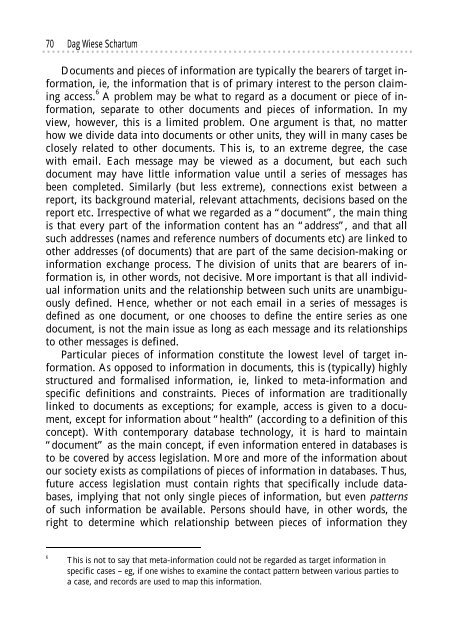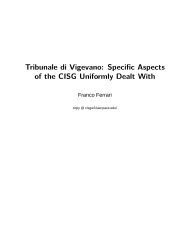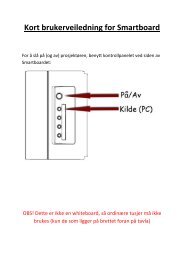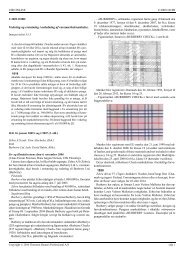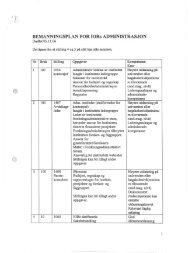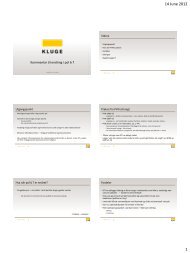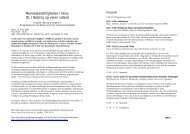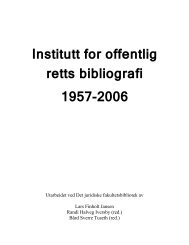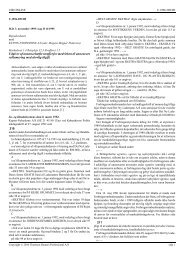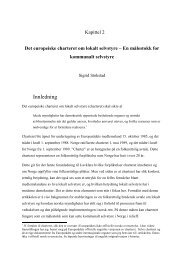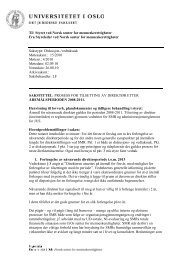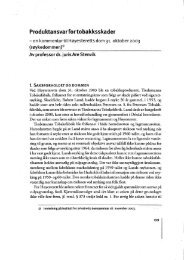Lee A. Bygrave (red.) YULEX 2002 - Universitetet i Oslo
Lee A. Bygrave (red.) YULEX 2002 - Universitetet i Oslo
Lee A. Bygrave (red.) YULEX 2002 - Universitetet i Oslo
Create successful ePaper yourself
Turn your PDF publications into a flip-book with our unique Google optimized e-Paper software.
............................................................................<br />
70 Dag Wiese Schartum<br />
Documents and pieces of information are typically the bearers of target information,<br />
ie, the information that is of primary interest to the person claiming<br />
access. 6 A problem may be what to regard as a document or piece of information,<br />
separate to other documents and pieces of information. In my<br />
view, however, this is a limited problem. One argument is that, no matter<br />
how we divide data into documents or other units, they will in many cases be<br />
closely related to other documents. This is, to an extreme degree, the case<br />
with email. Each message may be viewed as a document, but each such<br />
document may have little information value until a series of messages has<br />
been completed. Similarly (but less extreme), connections exist between a<br />
report, its background material, relevant attachments, decisions based on the<br />
report etc. Irrespective of what we regarded as a “document”, the main thing<br />
is that every part of the information content has an “address”, and that all<br />
such addresses (names and reference numbers of documents etc) are linked to<br />
other addresses (of documents) that are part of the same decision-making or<br />
information exchange process. The division of units that are bearers of information<br />
is, in other words, not decisive. More important is that all individual<br />
information units and the relationship between such units are unambiguously<br />
defined. Hence, whether or not each email in a series of messages is<br />
defined as one document, or one chooses to define the entire series as one<br />
document, is not the main issue as long as each message and its relationships<br />
to other messages is defined.<br />
Particular pieces of information constitute the lowest level of target information.<br />
As opposed to information in documents, this is (typically) highly<br />
structu<strong>red</strong> and formalised information, ie, linked to meta-information and<br />
specific definitions and constraints. Pieces of information are traditionally<br />
linked to documents as exceptions; for example, access is given to a document,<br />
except for information about “health” (according to a definition of this<br />
concept). With contemporary database technology, it is hard to maintain<br />
“document” as the main concept, if even information ente<strong>red</strong> in databases is<br />
to be cove<strong>red</strong> by access legislation. More and more of the information about<br />
our society exists as compilations of pieces of information in databases. Thus,<br />
future access legislation must contain rights that specifically include databases,<br />
implying that not only single pieces of information, but even patterns<br />
of such information be available. Persons should have, in other words, the<br />
right to determine which relationship between pieces of information they<br />
6 This is not to say that meta-information could not be regarded as target information in<br />
specific cases – eg, if one wishes to examine the contact pattern between various parties to<br />
a case, and records are used to map this information.


